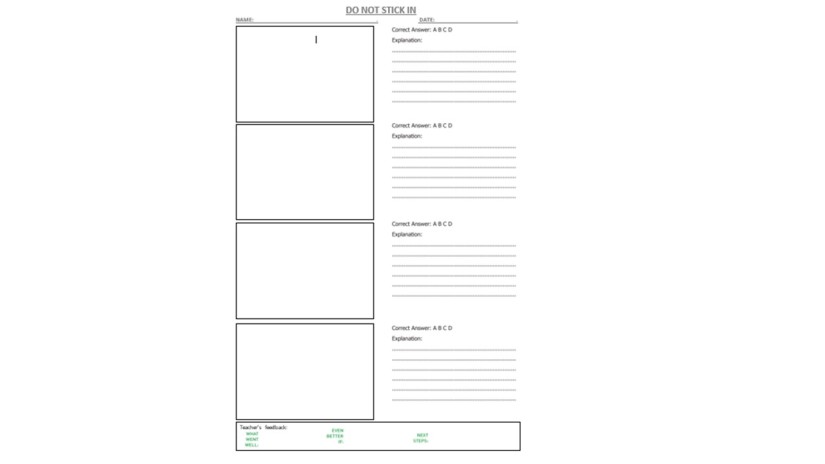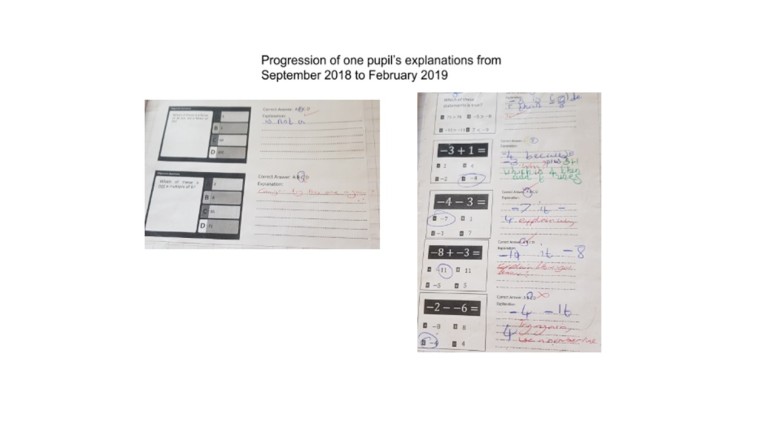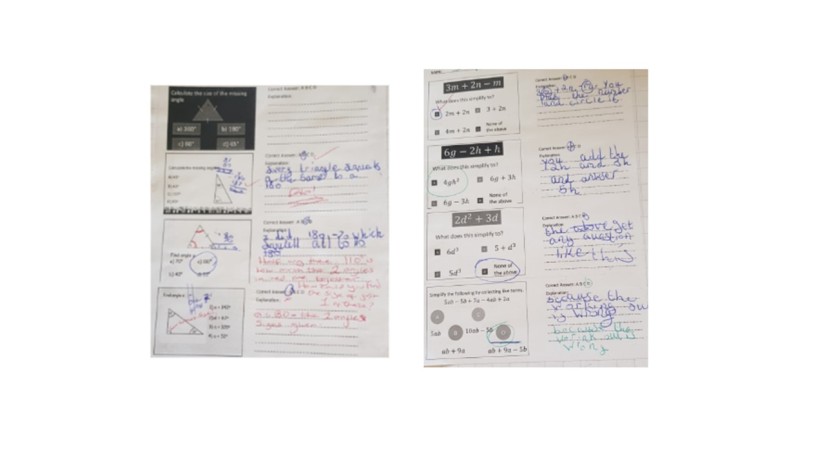Liz Hill – Teacher of Maths
In 2013, reforms to English and Mathematics GCSEs were announced. The aim of the new specification for mathematics GCSEs was to “demand deeper and broader mathematical understanding” whilst also requiring pupils “to apply their knowledge and reasoning to provide clear mathematical arguments.” (Nov 2013 https://www.gov.uk/government/speeches/reformed-gcses-in-english-and-mathematics )
When planning lessons, I not only think about teaching how and when to apply specific mathematical skills, but I also want to teach pupils to be able to offer a written explanation to reinforce their understanding, as per the new specification. Whilst I am aware that many pupils are able to articulate the ‘why’ and the ‘how’ verbally when questioned, the process of writing down the ‘why’ is often a challenge. Add to this that the syllabus is now larger and more demanding – how are you supposed to teach content and have pupils provide written mathematical arguments?
Enter the exit ticket!

I cannot take all the credit for the layout of my exit tickets, I commandeered it from MrBartonMaths and have tweaked it to fit with Sarah Bonnell’s marking policy.
The exit ticket is given out 10 to 15 minutes before the end of the lesson after a series of lessons on a topic has been taught. Pupils are to answer the four questions quietly and independently, although I encourage pupils with support workers to have a go at it alone.
From the pupils’ answers, I aim to learn how well the pupils understand the topic we have been studying. Each question is supposed to be more challenging than the last, and each question is diagnostic (a post to be written on this at a later date!) so I get a clear insight in to any misconceptions before even reading the pupils’ explanations.
On the right hand side pupils are meant to offer an explanation. I often tell them to imagine they are explaining to a martian how to work out the answer to the question. For those who aren’t confident and who struggle to write an explanation I ask for clear working out, since this is also a key skill in gaining marks at GCSE.
Since rolling these out in September, I have noticed that the ability of my pupils in articulating ‘why’ when asked has improved infinitely. My pupils are becoming more confident and detailed when sharing their method and thought process for solving a problem. Even more exciting are my pupils’ improvements when providing written explanations. Exit tickets are being answered faster and faster in classes where they do them regularly. Pupils have gained independence when starting their exit tickets – they are quiet, focused and thoughtful.
I have practised the exit tickets most often with my Year 8 class who are set 5 and often lack the confidence needed to allow themselves to progress. In September, some pupils were unable offer any explanation and I made it clear that they just need to circle A, B, C, or D (as I have said already, the diagnostic question lets me assess their understanding straight away). I mark the tickets with excitement and pride as I see the progress of the class. The same pupils who started the year circling only A, B, C, or D, now offer me working-out and sentences of explanation without assistance, prompts or hints whatsoever. When given further time during the feedback sessions, these same pupils are able to reason with my questions and improve their answers. This will set them in good stead as they hurtle towards KS4 and start being expected to offer mathematical arguments to access the marks in the higher graded questions.


As my groups’ ability and confidence in explaining has improved, I must confess that my feedback on exit tickets has improved too. Each exit ticket is a marked piece of work with a WWW, EBI and clear questions, so pupils can develop their understanding and reasoning to take themselves to the next step. I am currently working with the Exit Ticket template version 2.0. If you think that you could use it for your lessons, and find ways to improve it, please let us know how it goes!
